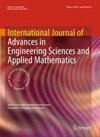木薯皮和木屑上生长的废和未接种平菇基质的营养评价
IF 0.8
Q3 ENGINEERING, MULTIDISCIPLINARY
International Journal of Advances in Engineering Sciences and Applied Mathematics
Pub Date : 2023-03-01
DOI:10.11591/ijaas.v12.i1.pp1-6
引用次数: 0
摘要
本研究旨在通过比较接种前巴氏灭菌菌底物(BI)与在木薯皮和木屑上培养的平菇(Pleurotus ostreatus)废菌底物(SMS)的矿物成分和近似成分,评价食用菌在蘑菇底物生物降解中的作用。该实验是在尼日利亚伊莫州奥韦里联邦科技大学进行的。本研究采用不同水平的麦麸处理,即T1(对照组C/N为17:0)、T2 (C/N为17:1)和T3 (C/N为17:3)。在基质中加入2%石灰以稳定ph。实验采用完全随机设计(CRD),重复三次。使用标准程序测定矿物和近似成分。生成的数据进行方差分析(ANOVA), p = 0.05。结果表明,接种底物前的矿质成分显著高于SMS处理,分别为Na (0.10 ~ 0.17 mg/kg)、mg (0.25 ~ 0.40 mg/kg)、灰分(1.56 ~ 2.65%)、Ca (0.62 ~ 1.40 mg/kg)、K (0.25 ~ 0.42 mg/kg)、P (0.11 ~ 0.44 mg/kg),而近似成分为干物质(81.6 ~ 93.3%)、N(0.18 ~ 0.31%)、粗蛋白质(1.13 ~ 1.94%)、粗纤维(2.84 ~ 4.82%)。结果表明,平菇释放的营养物质中有相当一部分被吸收到菌体中。因此,平菇可用于木薯皮和锯末基质的浓缩,进一步用于家畜饲料的配制。但是,特别是在评价基质的更多营养指标方面,建议进行进一步的研究。本文章由计算机程序翻译,如有差异,请以英文原文为准。
Nutritional evaluation of spent and uninoculated mushroom substrate of Pleurotus ostreatus grown on cassava peels and sawdust
This study aims to evaluate the role of edible fungi in the biodegradation of mushroom substrate by comparing the mineral and proximate composition of a pasteurized substrate before inoculation (BI) with the spent mushroom substrate (SMS) of Pleurotus ostreatus cultivated on cassava peels and sawdust. The experiment was conducted at the Federal University of Technology, Owerri, Imo State Nigeria. The treatment for this investigation comprised different levels of wheat bran namely: T1 (C/N 17:0 in the control), T2 (C/N ratio 17:1), and T3 (C/N ratio 17:3). 2% lime was added to the substrate to stabilize the pH. The experiment was laid out in a completely randomized design (CRD) which was replicated three times. The mineral and proximate compositions were determined using standard procedures. The data generated were subjected to analysis of variance (ANOVA) at (p = 0.05). The result obtained from this investigation reviewed that the mineral composition before substrate inoculation was significantly higher than those obtained from the SMS which were in the range: of Na (0.10-0.17 mg/kg), Mg (0.25-0.40 mg/kg), Ash (1.56-2.65%), Ca (0.62-1.40 mg/kg), K (0.25-0.42 mg/kg), and P (0.11-0.44 mg/kg) while the proximate composition is in the range: dry matter (81.6-93.3%), N (0.18-0.31%), crude protein (CP) (1.13-1.94%), crude fiber (2.84-4.82%). This result revealed that significant quantities of the nutrients unlocked by Pleurotus ostreatus were assimilated into the mushroom fruit bodies. Therefore, Pleurotus ostreatus could be used to enrich cassava peels and sawdust substrates which can further be utilized in the formulation of livestock feeds. However, further studies are recommended especially in evaluating more nutritional indices of the substrate.
求助全文
通过发布文献求助,成功后即可免费获取论文全文。
去求助
来源期刊

International Journal of Advances in Engineering Sciences and Applied Mathematics
ENGINEERING, MULTIDISCIPLINARY-
自引率
0.00%
发文量
6
期刊介绍:
International Journal of Advances in Engineering Sciences and Applied Mathematics will be a thematic journal, where each issue will be dedicated to a specific area of engineering and applied mathematics. The journal will accept original articles and will also publish review article that summarize the state of the art and provide a perspective on areas of current research interest.Articles that contain purely theoretical results are discouraged.
 求助内容:
求助内容: 应助结果提醒方式:
应助结果提醒方式:


